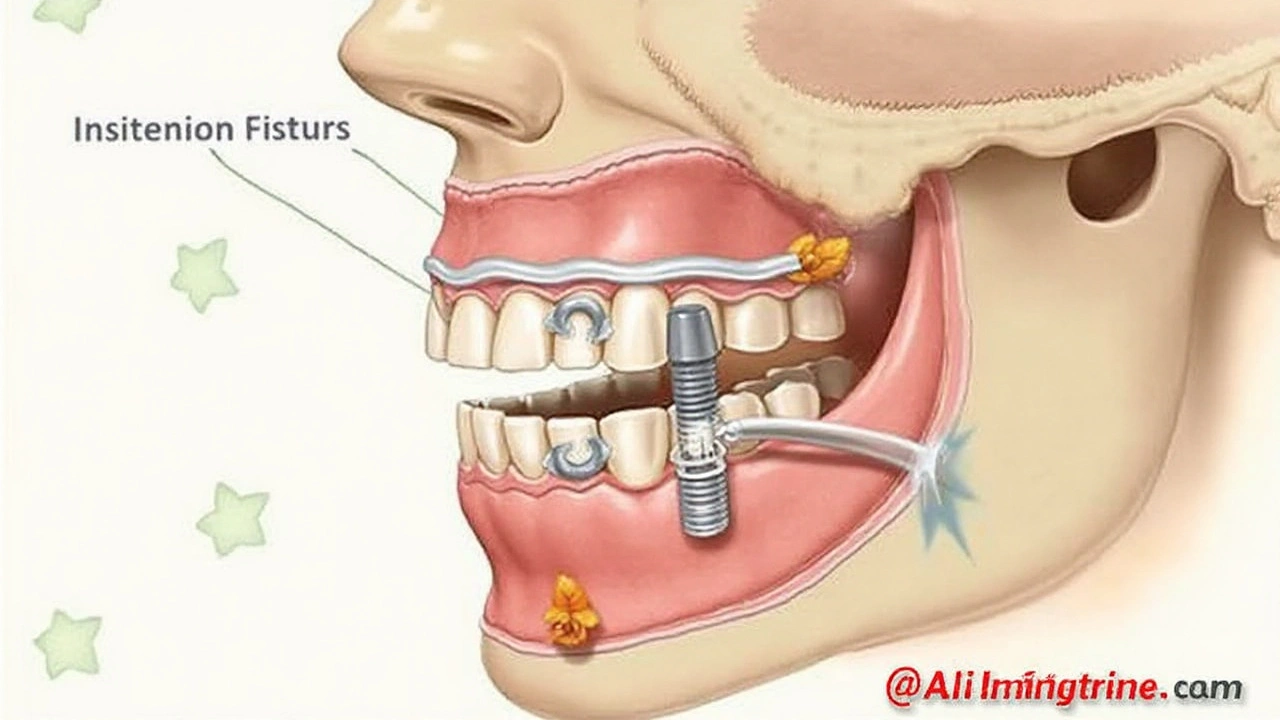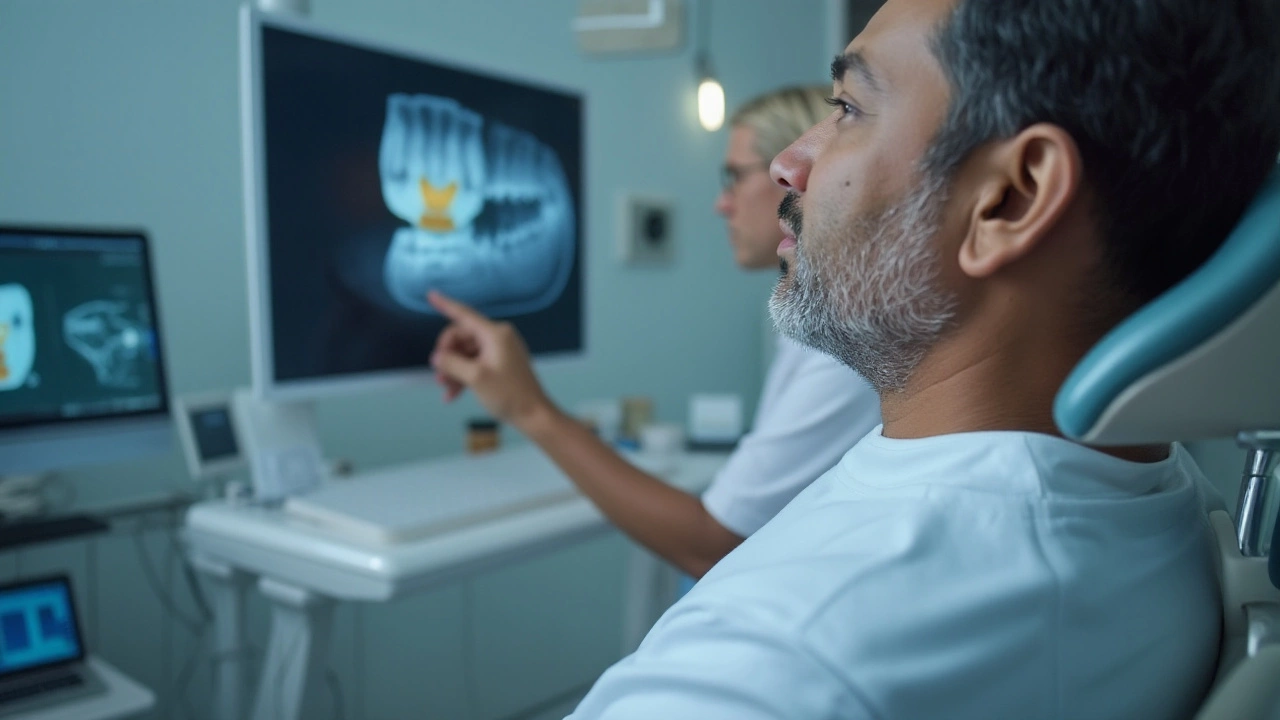Dental implants have changed the landscape of oral health care, offering a long-lasting solution for missing teeth. However, like all medical procedures, they come with their own set of challenges. It's crucial for individuals considering implants to understand the risks and commitments involved before making a decision.
While they offer the advantage of a natural look and feel, potential downsides such as possible complications and financial costs should not be overlooked. In this article, we'll delve into the aspects of dental implants that may not be as apparent, providing a comprehensive view to help you make an informed choice.
By exploring the less-discussed facets of dental implants, we aim to equip you with the knowledge to actively participate in discussions with your dentist. From understanding the healing process to knowing how to care for your implants long-term, this guide strives to provide a balanced perspective on what to expect on your dental journey.
- Introduction to Dental Implants
- Common Risks and Complications
- Financial Implications
- Long-Term Maintenance and Care
- Recovery Time and Process
- Mitigating Potential Risks
Introduction to Dental Implants
In the modern quest for a perfect smile, dental implants have emerged as a robust alternative to dentures and bridges. Essentially, these implants are artificial tooth roots, usually made of titanium, which provide a sturdy base for holding replacement teeth. Since their development more than half a century ago, dental implants have become a revolutionary option in dental treatments, praised for their durability and functionality.
The appeal of dental implants lies in their unique ability to integrate with human bone through a process called osseointegration. This biological phenomenon allows the metal post to become part of your jawbone, offering a remarkable look and feel that mimics natural teeth. With a success rate of over 95%, according to the American Association of Oral and Maxillofacial Surgeons, it's no wonder these small wonders are so sought after. However, this journey from consultation to completion is a meticulous one, demanding patience and attention to detail.
Dental implants aren't just about cosmetic appeal; they bring about significant functional benefits as well. They can prevent the bone loss that often accompanies missing teeth, maintain facial structure, and even enhance chewing efficiency. But it's worth understanding that they involve multiple stages, including an initial consultation, surgery to place the implant, a healing phase, and finally, the attachment of the crown. A quote often cited in dental circles from renowned periodontist Dr. Carl Misch encapsulates this well:
"Understanding the science behind dental implants allows us to replace nature with something that feels incredibly close."
Though effective, this process is not without its challenges and requires diligent post-operative care from the patient to ensure long-term success. Dental practices stress the importance of good oral hygiene and regular dentist visits to monitor the implant's condition. Recognizing that implants differ not just in procedure but in their types, such as endosteal and subperiosteal, can also be crucial for potential candidates. Choosing the correct type is often determined by the patient's bone structure and specific dental requirements.
To evaluate their viability for everyone, it’s beneficial to look at the demographics and efficacy reports. According to a recent survey, adults between 35 to 55 constitute the majority of implant recipients. The reason is not just cosmetic; it's about gaining a new lease on oral functionality, especially for those who've experienced accidents or disease-related tooth loss. Assessing one’s candidacy involves several factors like oral health, lifestyle, and even economic considerations.
The advancements in technology have only propelled the field forward. Computer-guided implantology and digital imaging have minimized the guesswork involved in surgery and maximized precision, reducing risks significantly. While these procedures are safe, it's interesting to note that not everyone may be an ideal candidate. Pre-existing conditions like periodontal disease or insufficient bone thickness can complicate matters. A comprehensive pre-surgical evaluation helps set the stage for success, thereby ensuring that every implant has the best possible environment to thrive.
Common Risks and Complications
Dental implants are an impressive advancement in oral health technology, yet they are not without risks. One of the primary concerns is implant failure, which may occur when the jawbone doesn't properly fuse with the implant. This process, known as osseointegration, is essential for the stability of the implant. If disrupted, it can lead to a loose implant or, in some cases, rejection altogether. Factors such as insufficient bone density or excessive pressure on the implant can hinder this crucial stage of healing.
Another potential complication is infection at the site of the implant. Despite the sterile environment and precise techniques used during surgery, infections can occur post-operation. This may be caused by bacteria entering the gum and bone tissue, especially if proper oral hygiene is not maintained. Symptoms of infection might include swelling, pain, and inflammation, which are not typical post-operative signs after the initial few days of healing, warranting immediate dental consultation.
Nerve damage is also on the radar of risks, particularly if the implants are placed too close to nerves. This might result in tingling, numbness, or pain in areas like the lips, chin, or gums. It's crucial for dental professionals to evaluate and plan correctly, using imaging technologies to prevent such complications. Sometimes, patients experience sinus issues when implants placed in the upper jaw protrude into sinus cavities.
There are also complications related to oral health conditions, such as those for individuals dealing with gum disease. Healthy gums are fundamental to the success of dental implants; any prior or existing gum disease could significantly compromise the success rate. It's during the meticulous planning stage that these factors are assessed, yet it's important for patients to understand that conditions like diabetes or smoking habits can also adversely affect implant success.
According to the American Dental Association, “While implants enjoy a high success rate, up to 5% of cases might experience complications. Proper assessment and post-care are pivotal in achieving desired outcomes.”
For those looking for a durable tooth replacement, it's important to consider these risks against the benefits. Engaging in deep discussions with dental care providers, asking questions about potential risk factors, and understanding their personal health scenarios, are steps that could not only prevent complications but also ensure a successful dental implant procedure. By staying informed, patients can take proactive steps towards achieving the desired outcomes while minimizing the risks associated with dental implants.

Financial Implications
When contemplating dental implants, one cannot overlook the financial commitments involved. Unlike dentures or bridges, which might seem more wallet-friendly upfront, implants are a long-term investment requiring substantial financial planning. At first glance, the cost might appear daunting. To give you a clearer picture, the average cost of a single implant can range anywhere from $3,000 to $5,000. This figure includes the price of the implant post, abutment, and crown. However, don't be surprised if the tab rises due to associated procedures like bone grafting, which is often required when bone density isn't adequate for implant placement.
Many patients are unaware that dental insurance typically doesn't cover implants comprehensively. In many instances, insurance policies might pay a partial amount for the crown or abutment, but the bulk of the implant costs frequently falls on the patient. Therefore, understanding your insurance plan and discussing the dental practice's payment options becomes imperative. Some clinics offer internal financing plans or collaborate with third-party lenders to break down the payments into manageable monthly installments.
"Choosing dental implants is as much about the investment in your health as it is in crafting a confident smile," advises Dr. James Smith, a renowned prosthodontist at the Oral Health Institute.
Another layer of financial implications comes with the time investment needed for the procedure, as dental implants are not instantaneous. The process can span several months, requiring multiple visits for consultations, surgery, and follow-up checks, each potentially adding to the costs. This is why thorough financial and time planning is a critical component of the decision-making process.
The Long-Term Financial Perspective
While the initial costs may seem like a financial hurdle, it is essential to view dental implants from a long-term perspective. Compared to dentures or bridges that might require more frequent replacements or repairs, implants often stand the test of time, potentially offering decades of service with proper care. This longevity can result in savings over the years, as the need for replacements diminishes. Additionally, there is a significant boost in everyday convenience and oral function, underscoring implants as a value-rich choice for many.For those weighing their options, it's beneficial to engage in conversations with your dentist about the expected longevity and maintenance costs unique to implants. Asking questions about hidden costs, potential need for further treatments, or even the cost of maintenance can help in creating a more comprehensive financial plan. This foresight and understanding can transform the daunting financial implications into a well-bargained investment for your oral health and confidence.
Long-Term Maintenance and Care
Embracing dental implants is a commitment not just to an immediate smile fix, but to a lifelong journey of meticulous oral hygiene. Much like the upkeep of a prized vehicle, dental implants require a dedication to regular maintenance and checkups. The first step in ensuring longevity is establishing a daily routine that includes brushing your teeth twice a day with a soft-bristle toothbrush and using a non-abrasive toothpaste. Flossing once a day, preferably with a floss threader, is vital in removing debris from around the implant area where a toothbrush may not reach.
Regular checkups with your dentist are essential for maintaining your implant's health. It's advisable to schedule professional cleanings at least twice a year. Your dentist will not only clean around the implants but will also monitor for any signs of gum disease or bone loss. An often overlooked aspect is the periodic replacement of implant crowns. While the titanium posts—which serve as the root—can last a lifetime, the crowns usually have a lifespan of 10 to 15 years. This is comparable to natural teeth, and maintaining them requires similar vigilance.
Beyond the basics of brushing and flossing, adopting additional tools like antimicrobial mouth rinses can fortify your implant care routine. These rinses help in reducing plaque and prevent infections. Products specifically designed for implants are available, including special brushes and flossing aids. Yet, one should not substitute these tools for regular dental visits. Dental implants do not decay like natural teeth; however, the tissues supporting your implant can become infected if not cared for properly.
Another critical factor to consider is dietary habits. Consumption of sticky and hard foods should be minimized to prevent potential damage to your implant crowns. Quoting an insightful perspective,
"The longevity of dental implants hinges more on the patient's commitment to oral care than on the implant itself," as noted by Dr. Emily Lewis, a renowned expert in implant dentistry.Engaging in habits such as smoking can significantly reduce the success rate of implants, so avoiding tobacco use is strongly advised.
For those who enjoy a more analytical approach, the impact of meticulous care on the success rate of implants cannot be overstated. According to data gathered from multiple studies, patients who adhere to a comprehensive maintenance schedule exhibit a higher implant survival rate of up to 98% over a decade.
| Year | Implant Survival Rate |
|---|---|
| 5 Years | 97% |
| 10 Years | 95% |
| 20 Years | 90% |
Long-term maintenance goes beyond physical care and includes being attentive to changes or discomfort around the implant site. Any signs of inflammation, pain, or loosening should prompt an immediate visit to your dentist. These could indicate potential problems that, if caught early, can be managed effectively without compromising the implant. Patients must understand that while implants mimic natural teeth closely, their unique characteristics require a slightly different maintenance approach, one that prioritizes both preventive and responsive care.

Recovery Time and Process
After receiving dental implants, the journey to recovery involves a series of stages which must be understood and adhered to for optimum results. The recovery period varies greatly depending on several factors including the patient’s oral health, the number of implants placed, and adherence to post-operative care instructions. Typically, initial healing occurs within a week, but complete osseointegration—the process by which the jawbone fuses with the implant—can take several months to a year.
During the first week post-surgery, patients might experience swelling, minor bleeding, and discomfort, often manageable with prescribed pain medication and cold compresses. It’s crucial to follow a soft diet to prevent pressure on the newly placed implants. Avoiding physical strain and maintaining excellent oral hygiene aids in reducing the risk of infection. A critical aspect here is not only the physical recovery but also the psychological adaptation to having implants.
Oral health expert Dr. Thomas Ramirez once noted, "The success of dental implants largely hinges on the patient’s commitment to post-operative care and understanding the process of osseointegration, which is the backbone of dental implant stability."
After initial healing, patients begin the meticulous process of osseointegration, which can span several months. This phase is crucial as it determines the longevity and strength of the implants. During this period, regular follow-ups are necessary to assess the progress. X-rays may be conducted to ensure the bone is integrating properly with the implant. Any signs of mobility or pain should be promptly addressed as they could indicate potential complications.
A pivotal component during recovery time is maintaining oral health through disciplined hygiene practices. Brushing twice daily with a soft-bristle toothbrush and using an antibacterial mouthwash can significantly lower risks of infection. Patients are advised to avoid smoking and excessive alcohol consumption as these can impede the healing process. A balanced diet rich in vitamins and calcium can also enhance recovery and implant success.
It is essential for patients to remain patient and realistic about the timeline involved. While dental surgery risks exist, understanding and preparing for the recovery process can mitigate many potential downsides. Ultimately, the investment in time and care during recovery plays a significant role in the long-term success and functionality of dental implants, making the effort worthwhile for most patients.
Mitigating Potential Risks
When it comes to dental implants, awareness and preparedness can significantly reduce the chances of encountering issues. Understanding the potential complications beforehand allows patients to take proactive steps towards a successful outcome. One key aspect is choosing a qualified and experienced dental professional. A skilled surgeon with experience in placing dental implants is essential for minimizing surgical risks. Researching the dentist’s credentials and asking for recommendations or testimonials can provide peace of mind and ensure you're in capable hands.
Pre-surgical evaluation is another critical step. Comprehensive assessment and imaging, such as X-rays or CT scans, help determine the suitability for implants and the best approach for the procedure. Conditions like insufficient bone density can lead to further complications if not addressed beforehand. Bone grafting might be considered to enhance the implant bed, ensuring a sturdy foundation and success rate. Proper planning with your dentist, based on detailed diagnostics, helps set realistic expectations for the surgery.
Post-surgery care is equally vital in mitigating risks associated with implant downsides. Maintaining excellent oral hygiene is crucial for preventing infection and promoting healing. Brushing, flossing, and using antiseptic mouthwash regularly can deter bacterial buildup around the implant site. It’s beneficial to follow a soft-food diet initially, gradually introducing tougher foods as healing progresses. Limiting habits like smoking and alcohol consumption improves recovery and reduces the chance of implant failure.
Importantly, regular follow-up visits with your dentist play a crucial role in long-term maintenance. Such appointments allow for early detection of potential issues and ensure that both your oral health and implants are well monitored. Customizing an oral care routine with professional guidance ensures that implants are not only functional but durable over time. As Helen Cook from the American Dental Association aptly noted,
"Commitment to oral hygiene routines post-implant is crucial for longevity and success."
Moreover, awareness of symptoms indicating problems, such as persistent pain or swelling, allows for timely intervention. Patients should be informed about what’s normal and what requires immediate attention. Such knowledge empowers you to participate actively in your implant care journey. Leveraging advanced materials and techniques in implant surgery is also beneficial. Surgeons employing state-of-the-art technology can achieve precise results, reducing trauma and improving healing rates.
In understanding these facets, patients can significantly enhance their implant experience. By laying a foundation of knowledge and partnering with trusted professionals, the pathway to regaining a confident and functional smile becomes smoother. This comprehensive awareness fosters not only improved outcomes but also an enriching journey with dental surgery risks mitigated to the best extent possible.
